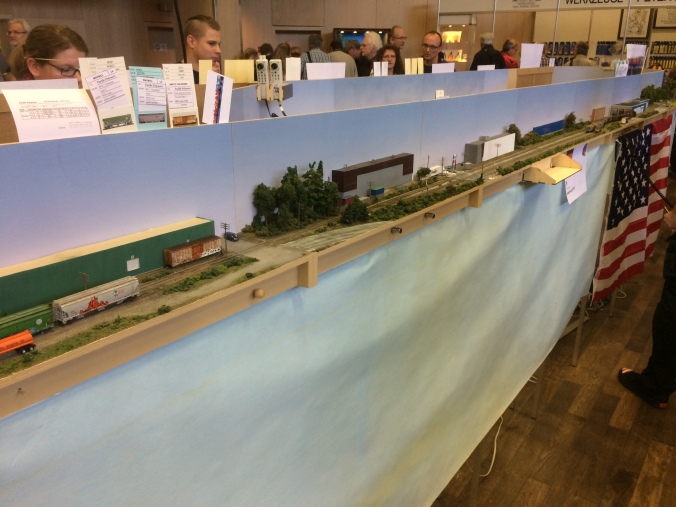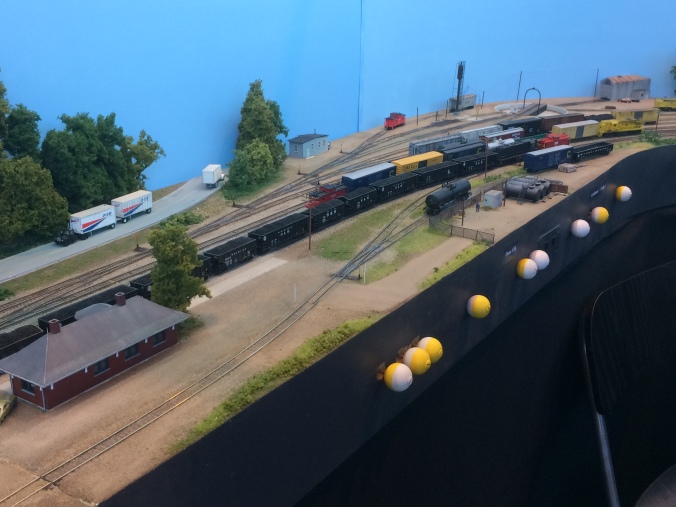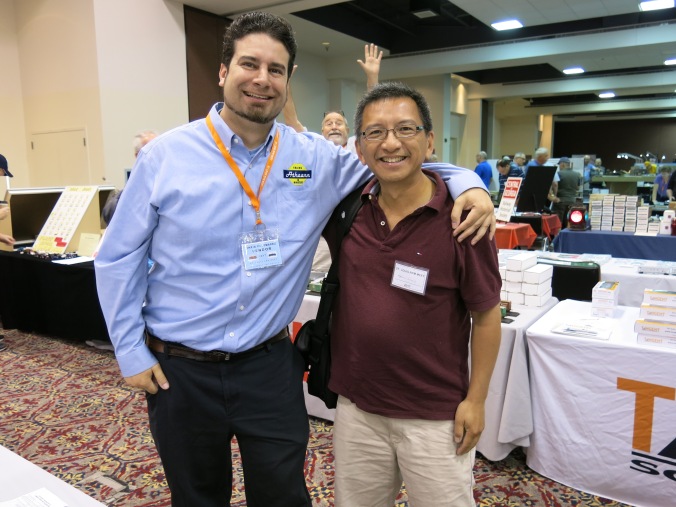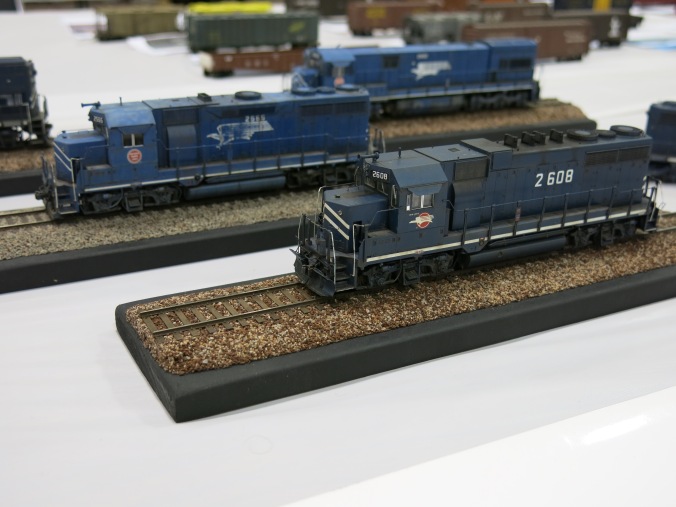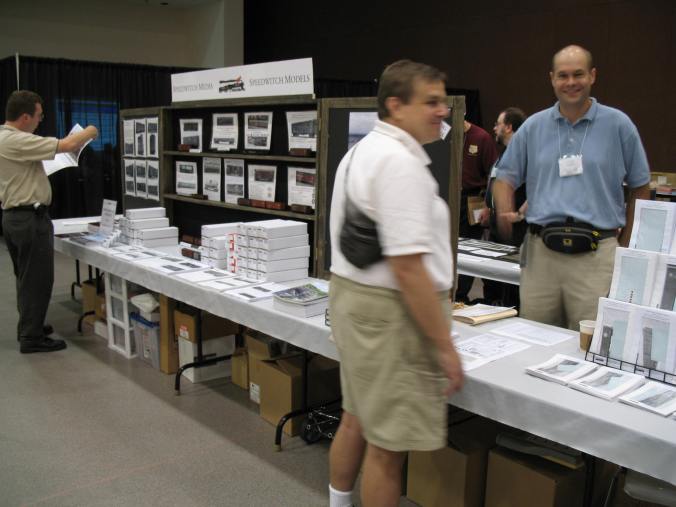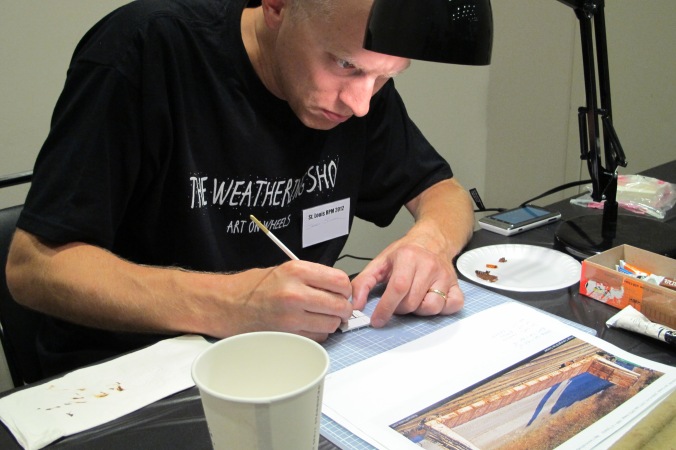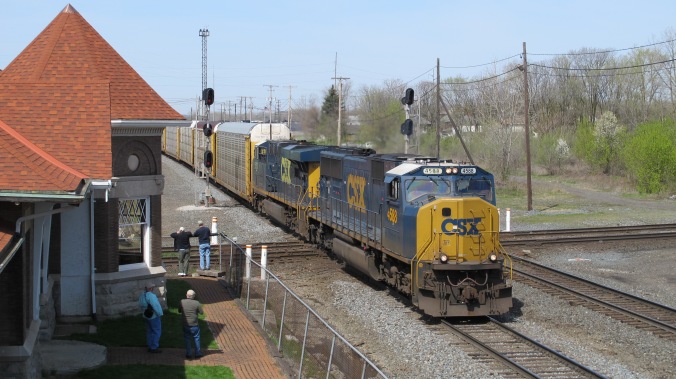This post on the 2018 St. Louis RPM Meet focuses on some of the 3,700+ models brought by attendees for display.
Here is a view of the 81 8×2-1/2-foot model tables on Saturday morning before the doors opened. Most of the tables are filled although it looks like this one UP train took up three tables. That’s okay though–that’s one reason why we get so many.

This selection encompasses only photos I took. Our photographer, Mark Lewis, took a lot more photos and I’ll post some of those soon.

Above. Dennis Eggert has always been a hero of mine with his cool CNW kitbashes and exquisite locomotive weathering. CNW 1619 is one of my favorite engine types, an RSC-3, and Dennis has weathered it beautifully.

Above. Clark Propst continues to bring interesting models to RPM meets. Clark decided that displaying models by themselves was boring–and he is right–so he built this Walthers grain elevator kit and diorama to show off his freight cars. He built the whole scene on a piece of Masonite. How simple, and how cool.

Lonnie Bathurst (with the help of another unnamed St. Louis RM host…) displayed the first stages of his Pillsbury Mills model. The prototype was in Springfield, Illinois and Lonnie and Ryan Crawford tag-teamed a clinic on the subject during the meet. The completed model will be installed on the Litchfield Train Group layout in Litchfield, Illinois. The silos are 2-inch PVC pipe and the headhouse is a cardboard mock-up with a photo of the headhouse enlarged to fit.

Bill Darnaby sneaked in to St. Louis RPM and displayed this 1/48th scale model of a Union Traction car. I don’t know for sure, but I suspect it is built to Proto48 standard…

Bill Welch continues to break new ground building HO scale freight cars. Bill presented a clinic on extreme freight car modeling and—to back up the clinic—displayed models he’s kitbashing of several single-sheathed cars.

A closer view of one of Bill’s cars. This I believe is an MKT prototype.

Brian Strom is a great guy and an extremely talented modeler, pursuing his art in both HO and Proto48. This HO scale ICG F-unit is superbly finished. The craftsmanship is simply brilliant.

There was quite a bit of S scale at St. Louis RPM. Dick Harley showed these beautifully painted and weathered S scale models.

David Stewart is a well-known DC-area O scaler, and brought this huge NKP Berk to St. Louis. The prototype engines were regulars here into the late 50s. This engine is absolutely incredible. Thanks for making the big effort to bring this big engine to St. Louis, David!

In addition to models brought by attendees, vendors displayed a whole lot of models too. Speedwitch Media showed off this future mini-kit for a NYC 50-fot box car. As always, Ted Culotta’s detail and finish work is second-to-none.

Chad Boas, a cottage manufacturer from Lafayette, Indiana, produces a good number of HO scale models in small runs. He’s famous in the Midwest for offering very affordable multi-media flat car kits. One of Chad’s newest offerings is the cool Monon single-sheathed box car I was able to get on and my model is already under construction.

Here are some of the many hundreds of vehicles that came along with the 1/87 Vehicle Group. These guys had a tremendous display and filled at least eight tables with vehicles models. If you know how small HO scale vehicles are, that’s a whole lot of models!

These vehicles were on display by Andy Weusthoff, one of St. Louis’s Finest, and one of St. Louis’s finest modelers.

This truck was brought by Brad Slone. Who knew Brad was a vehicle modeler! And a damn fine vehicle modeler too!
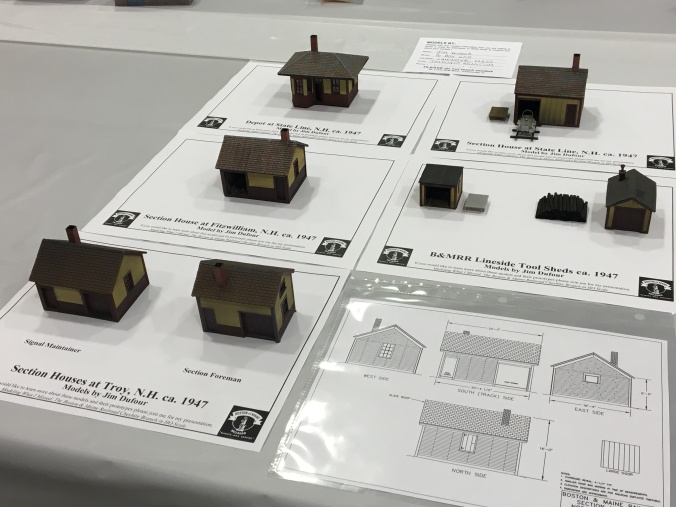
After years of begging, my friend Jim DuFour made the big trip to St. Louis from his home in Massachusetts. Jim gave a great clinic on his B&M layout and brought these exquisite some models for display. Search for Jim DuFour, B&M layout on You Tube and you’ll see why we wanted him here!

A close-up of Jim DuFour’s exquisite prototype modeling work.

Around the late 1970s I used to read article in Mainline Modeler by this guy names Bob Rivard. The guy was a visionary. He modeled the prototype exactly like it was. In all regards–trackwork, scenery, rolling stock, ops schemes–his modeling was unparalleled. Bob is now a regular speaker at St. Louis, and he brought this cool display to show models in an absolutely prototypical setting. Bob is a great guy and one of the most helpful and inspirational modelers you’ll ever meet.

Here’s another view of Bob Rivard’s display. The simplicity of the detail, the color, the textures, it’s fantastic.
That’s all for now. Hope you enjoyed a few photos. Other photos are available at https://www.flickr.com/photos/116454307@N06/albums/with/72157671678210028 and http://www.pbase.com/ehansmann/2018_rpm_st_louis and there is additional coverage at http://blog.resincarworks.com/st-louis-rpm-summary/.
Enjoy! – John G



























